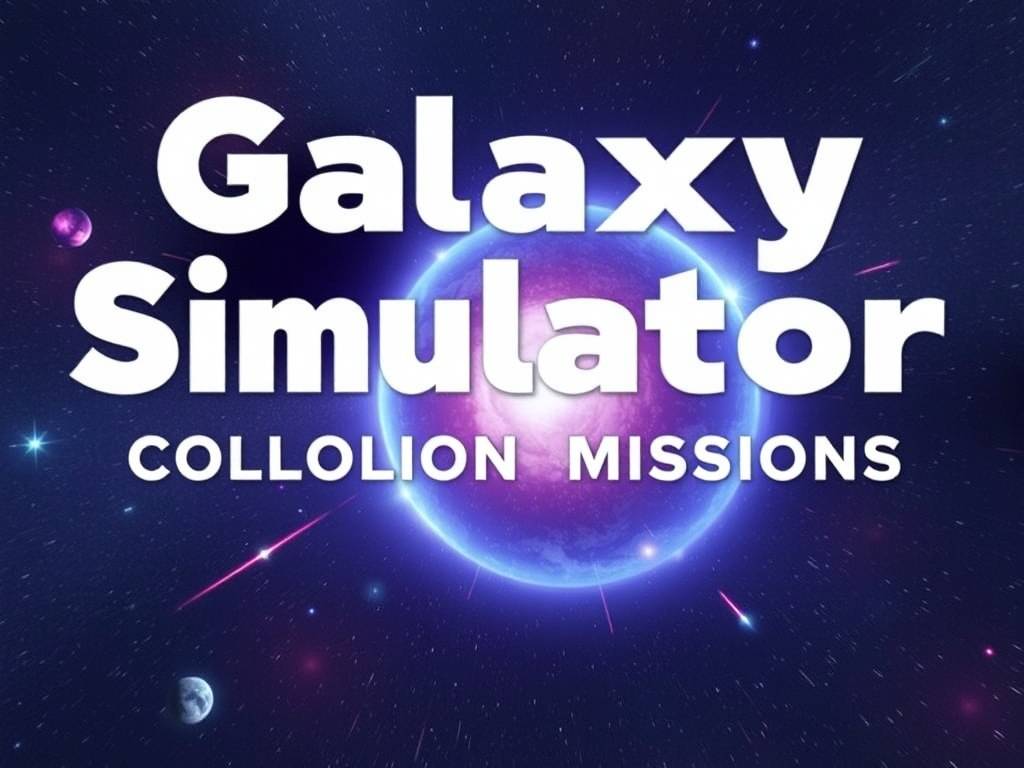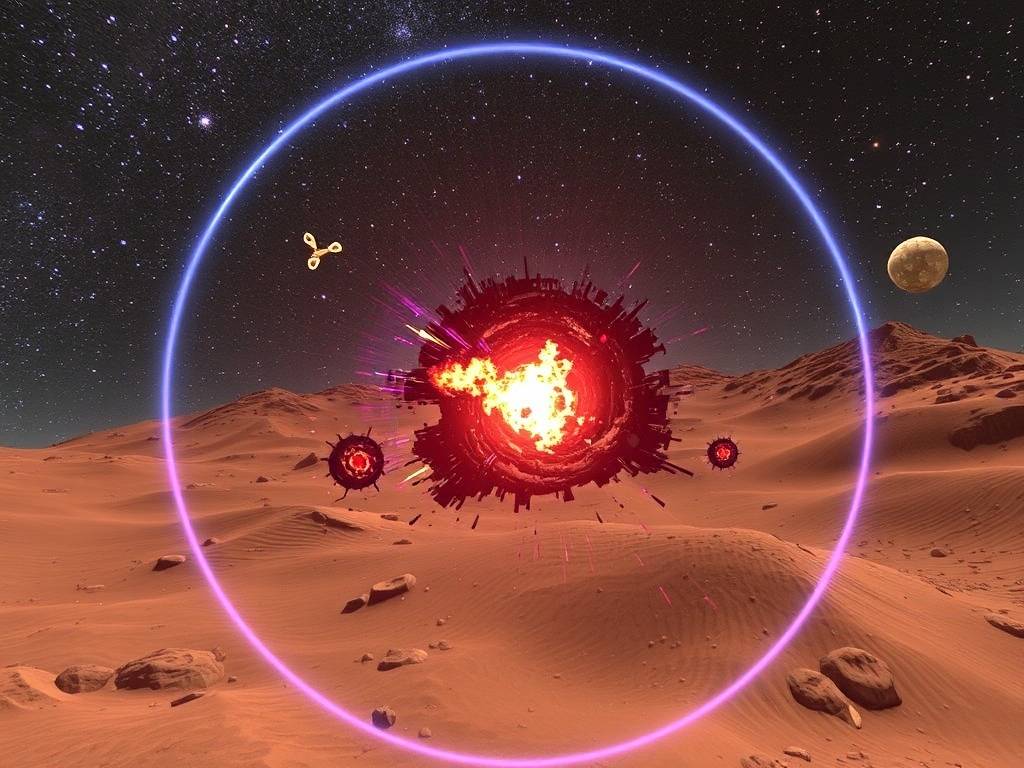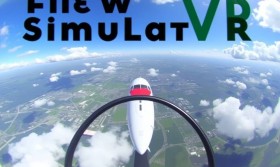Title: Into the Cosmic Forge: How the 'Collision Missions' Update Transforms Galaxy Simulator VR from a Spectacle into a Saga
For years, Galaxy Simulator VR has stood as a pinnacle of cosmic escapism. It has offered armchair astronomers and sci-fi enthusiasts an unparalleled front-row seat to the universe's most majestic and violent ballet. We've all spent countless hours wielding god-like power, nudging planets from their orbits, igniting stars into supernovae, and watching in awe as spiral galaxies merge in a silent, breathtaking display of light and gravity. It was a magnificent sandbox, a cosmic toy box. But a question often lingered after the initial wonder faded: "What now?" The developers have heard this whisper from the void, and with the monumental "Collision Missions" update, they have answered with a resounding echo that fundamentally redefines the experience. This is no longer just a simulator; it is now a narrative-driven cosmic saga.
From Spectator to Strategic Architect
The core of the "Collision Missions" update is a new game mode that introduces purpose, consequence, and high-stakes strategy. Instead of merely triggering collisions for their visual splendor, you are now tasked with managing them to achieve specific, critical outcomes. A new in-game interface, styled as a "Celestial Command Terminal," presents you with a series of missions generated by a mysterious entity known as the "Archivists of the Void."

These missions are far from simple "cause a crash" directives. They are complex puzzles written in the language of astrophysics. One mission might task you with saving a fledgling planetary system on the outskirts of a galaxy from an incoming rogue star. Your goal isn't to obliterate the star, but to use its gravity in a precise slingshot maneuver, diverting it just enough to miss the inhabited worlds while simultaneously using its passage to fling a resource-rich ice giant into a more stable, habitable orbit. This requires an understanding of orbital mechanics, momentum, and timing that goes far beyond the game's previous scope.
Another mission might involve the deliberate triggering of a kilonova—a collision of two neutron stars—to seed a vast, empty region of space with heavy elements like gold and platinum, essentially "fertilizing" the void for future star formation. The challenge here is to ensure the explosion's shockwave is shaped correctly, using strategically placed gas giants as buffers to contain the dispersion, maximizing the yield for the Archivists' enigmatic purposes. Failure isn't just a "mission failed" screen; it can mean the creation of an unstoppable black hole binary system or the sterilization of an entire galactic arm.
The Introduction of the Quantum Reality Engine
Underpinning these new missions is a groundbreaking piece of procedural technology the developers call the "Quantum Reality Engine." Previously, collisions followed impressive but somewhat predictable physical models. The new engine introduces a layer of controlled chaos and emergent phenomena. When two gas giants collide now, the outcome isn't just a larger gas giant or a new star. Depending on their composition, angle, and velocity, you might witness the formation of a unique, tempestuous "helium-class" world, a protoplanetary disk teeming with new moons, or even a failed star glowing a faint cherry red.
This engine makes every mission a unique experiment. Replaying the same mission can lead to wildly different outcomes based on minor adjustments to your approach. The "Butterfly Effect" is not just a concept here; it's the core gameplay mechanic. A small moon used as a gravitational brake might shatter under tidal forces, its debris field permanently altering the landscape of the system and presenting new, unplanned challenges or opportunities. This unpredictability forces players to think like true celestial engineers, planning for multiple contingencies and adapting their strategies in real-time.
A New Dimension of Sensory Immersion
Of course, this is VR, and the "Collision Missions" update leverages the platform to its fullest, delivering a sensory overload that grounds the high-concept strategy in raw, visceral experience. The sound design has been completely overhauled. With a high-fidelity VR headset, you can now "feel" the low-frequency rumble of colliding planetary bodies through haptic feedback. The silent movie of the cosmos is over; now, you are immersed in a cacophony of shattering crusts, fusion ignitions, and the terrifying screech of spacetime itself warping under immense gravitational stress.
Visually, the team has implemented a new "Spectrometry View" mode. By activating this, the sterile beauty of the collision is overlaid with vibrant, real-time data. You can see the elemental composition of shockwaves—oxygen burning blue, hydrogen flaring red, iron bleeding orange—allowing you to analyze the scientific results of your actions. It’s a tool that beautifully marries the artistic spectacle with the hard science, making you feel less like a destroyer and more like a scientist observing the fundamental forges of creation.
The Dawn of a Cosmic Legacy
The "Collision Missions" update is more than a content drop; it is a paradigm shift for Galaxy Simulator VR. It successfully bridges the gap between the passive awe of a tech demo and the engaged intellect of a deep simulation. It challenges players to not only appreciate the beauty of cosmic violence but to understand its mechanics, harness its power, and bear the responsibility of its consequences.
By introducing structured goals, a revolutionary physics engine, and deeper immersion, the game transforms from a delightful pastime into a compelling journey. You are no longer just a player; you are an agent of cosmic change, a student of the universe's most powerful forces, and an architect of tomorrow's galaxies. The update invites you to step into the Cosmic Forge, roll up your sleeves, and not just witness history, but to write it in the stars themselves.



















